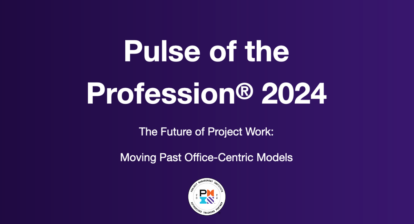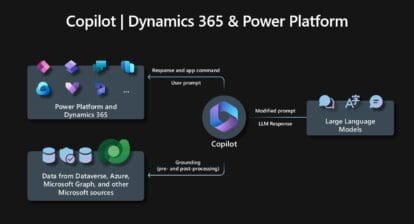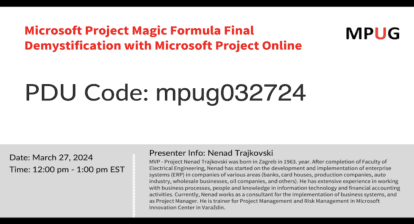Project Management is a systematic and organized approach to planning, coordinating, and overseeing the work of a team to achieve a specific goal. It involves defining the project scope and objectives, creating a detailed plan, and identifying the resources and schedule required to complete the project.
The project manager is responsible for coordinating the work of the team, monitoring progress, and making any necessary adjustments to ensure that the project is completed on time and within budget.
PM is used in a variety of industries and can be applied to projects of different sizes and complexities. It is a valuable tool for ensuring that projects are completed efficiently and effectively, and can help organizations achieve their goals and objectives.
The key to understanding Project Management is to understand what a project is.
What is a Project
The Project Management Institutes (PMI) PMBOK defines a project is “a temporary endeavor undertaken to create a unique product, service or result.” This definition emphasizes the temporary and unique nature of a project, with a predetermined start and end date, as well as its focus on creating a specific outcome. The PMBOK also notes that a project is typically different from ongoing operations or business as usual, and that it requires the coordination of various resources and activities in order to achieve its objectives.
From start to finish, a project usually goes through five phases, called the Project Life Cycle. These include:

Defining the Project
In the initiation stage, the role of a project manager is to define what the project is and what the users hope to achieve (Project Goals) by undertaking the project. This phase also includes a list of project deliverables, the outcome of a specific set of activities. The project manager works with the business sponsor or manager who wants to have the project implemented and other stakeholders — those who have a vested interest in the outcome of the project.
Planning the Project
Define all project activities. In this stage, the project manager lists all activities or tasks, how the tasks are related, how long each task will take, and how each tasks is tied to a specific deadline. This phase also allows the project manager to define relationships between tasks, so that, for example, if one task is x number of days late, the project tasks related to it will also reflect a comparable delay. Likewise, the project manager can set milestones, dates by which important aspects of the project need to be met.
Define requirements for completing the project. In this stage, the project manager identifies how many people (often referred to as “resources”) and how much expense (“cost”) is involved in the project, as well as any other requirements that are necessary for completing the project. The project manager will need to manage assumptions and risks related to the project. The project manager will also identify project constraints. Constraints typically relate to schedule, resources, budget, and scope. A change in one constraint will typically affect the other constraints. For example, a budget constraint may affect the number of people who can work on the project, thereby imposing a resource constraint. Likewise, if additional features are added as part of the project scope, that could affect scheduling, resources, and budget.
Executing the Project
Build the project team. In this phase, the project manager knows how many resources and how much budget they have to work with for the project. The project manager then assigns those resources and allocates the budget for various tasks in the project. Now the work of the project begins.
Controlling the Project
The project manager is in charge of updating the project plans to reflect the actual time elapsed for each task. By keeping up with the details of progress, the project manager is able to understand how well the project is progressing overall. A product such as Microsoft Project facilitates the administrative aspects of project management.
Closure of the Project
In this stage, the project manager and business owner pull together the project team and those who have an interest in the outcome of the project (stakeholders) to analyze the final outcome of the project.
Time, Money, Scope
Project management is often described as a balancing act between three core components: time, budget, and scope. These elements are interconnected, and any change in one aspect will likely have a ripple effect on the others. For instance, if a company decides to reduce the timeline for a project, it will inevitably impact the scope of work that can be accomplished within that timeframe. To meet the shortened deadline, the project team may need to scale back certain features or deliverables, prioritizing essential elements while postponing or eliminating others.
Alternatively, to maintain the original scope within the compressed schedule, the company may need to allocate additional resources, such as hiring more staff or procuring advanced equipment. This, in turn, would increase the project’s overall cost. Conversely, if the budget is cut, the project manager may need to adjust the scope or extend the timeline to work within the new financial constraints.
Successful project management involves carefully navigating these trade-offs and making strategic decisions to optimize the balance between time, budget, and scope, ensuring that the project’s objectives are met while staying within the allocated resources.
Project Portfolio Management
In this stage, the role of a project manager is to define what the project is and what the users hope to achieve by undertaking the project. This phase also includes a list of project deliverables, the outcome of a specific set of activities. The project manager works with the business sponsor or manager who wants to have the project implemented and other stakeholders – those who have a vested interest in the outcome of the project.
History of Project Management
It’s impossible to determine when project management was formed and conceptualized as one person managing resources to achieve a predetermined outcome, on or before a specific time, at a specific cost. However, we can look to history and notice how the concept of project management has developed over time.
The construction of the pyramids in ancient Egypt is a prime example of the earliest project management undertaking. These massive structures required careful planning and coordination of a large number of people and resources. The pharaohs who commissioned the pyramids would have needed to create a project plan, identify the resources required (including materials and labor), and establish a timeline for the project.
They would also have needed to manage the logistics of acquiring the necessary resources and coordinating the efforts of the workers. In this way, the construction of the pyramids was a complex project that required careful management in order to be successful.
Project Management as a Profession
As a profession, it has its roots in the 1950s and 1960s when the U.S. government began using it to manage complex defense projects. Since then, the discipline has evolved and grown, and it is now used in many different industries. In the 1970s, the Project Management Institute (PMI) was founded to promote the practice of project management and provide professional certification for project managers. Today, project management is a well-established profession with a robust body of knowledge and a wide range of tools and techniques to help professionals plan and manage projects.
Project management is a profession that is in high demand today, as organizations of all sizes compete with each other to produce goods and services and make a profit.
It helps these organizations to do this by providing a structured approach to planning and executing projects, which can help them to complete projects on time and within budget. This can give organizations a competitive advantage and help them to achieve their business goals. Additionally, effective project management can help organizations deliver high-quality products and services, which can help to build customer loyalty and drive long-term success.
Why is Project Management Important?
Regardless of the nature, size, or complexity of a project, all projects need careful planning, organization, implementation, and monitoring. Without such, projects can either fail or become challenged.
In order to deliver successful projects, one needs to implement various processes and follow best practices.
Here is a list of the top benefits of implementing best practices :
- Strategic alignment with organizational goals
- Consistent and speedy decisions
- Improvement in customer satisfaction
- Realistic estimation and planning
- Effective resource allocation
- Higher productivity and improved resource utilization
- Increase in employee motivation and morale
- Improved quality of end product
- Time saved during implementation
- Overall cost reduction
- Proactive risk management
Stages of Project Management and Project Management Methodologies
PM is about more than just getting the work done. It’s also about how you approach the work, and what methods you use to get things done. There are two main approaches to project management: waterfall, agile, and hybrid approaches.

Waterfall
Waterfall project management is an approach where a project is broken down into successive stages, each with its own specific deliverable and endpoint. Once a stage is completed, the team moves on to the next stage with little opportunity to change earlier stages.
This method is often used for large, complex projects that require a high level of control and predictability. If the requirements for a project are well-defined and unlikely to change significantly, waterfall project management may be the best option.
Agile
Agile project management is a more flexible approach focusing on adapting to change and delivering value early and often. Agile teams work in short, iterative cycles called “sprints,” and they use principles and practices, such as the Agile Manifesto, to guide their work.
Agile is used in a wide range of industries, including software development, IT, construction, engineering, and many others
Hybrid
Hybrid project management combines elements of traditional and Agile PM to create a customized approach that meets the specific needs of the project. For example, a hybrid PM approach might use a traditional project management framework for the overall project, but use Agile methods for specific parts of the project.
Hybrid PM is often used in large, complex projects that require a high level of control and predictability, but where some degree of flexibility and adaptability is also needed. For example, a hybrid approach might use a traditional framework for the overall project, but use Agile methods for specific parts of the project, such as managing the development of new features or capabilities.
Scrum
The Scrum framework helps teams work together more effectively by implementing the Agile methodology. In Scrum, everyone on the team works together to plan and execute the project in short Sprints. This approach allows for regular checkpoints to monitor progress and make necessary changes.
Scrum is a framework that can be used in a variety of different industries, including software development, marketing, product design, and many others.
Kanban:
The Kanban methodology is a visual system for tracking and managing work flow. In Kanban, teams use a board to visualize the progress of each task and identify areas where there may be bottlenecks or opportunities for improvement. This approach can help optimize the efficiency of work flow.
Get free access to MPUG’s agile, waterfall, and hybrid project management training with an MPUG Membership
10 Project Management Knowledge Areas
The 10 Project Management Knowledge Areas, as defined by the Project Management Institute (PMI) in its Guide to the Project Management Body of Knowledge (PMBOK), are:
- Project Integration Management: Coordinate and integrate the various components of a project.
- Project Scope Management: Define and control the scope of a project.
- Project Time Management: Plan, schedule, and control the duration of a project.
- Project Cost Management: Plan, estimate, budget, and control the costs of a project.
- Project Quality Management: Ensure that the quality of the project meets the specified requirements and expectations.
- Project Human Resource Management: Plan, organize, and manage the human resources involved in a project.
- Project Communications Management: Manage the flow of information among the various stakeholders of a project.
- Project Risk Management: Identify, assess, and mitigate risks associated with a project.
- Project Procurement Management: Acquire goods and services from external suppliers to support the project.
- Project Stakeholder Management: Identify, analyze, and manage the stakeholders of a project.
These knowledge areas are interrelated and should be considered in the context of the overall project management process. MPUG has a variety of lessons, courses, and articles available for you to learn more about these topics.
Project Management Certification
The project management approach you choose will define the specific skills and knowledge you need in order to be effective. Choose your method first, and then you can determine which certifications you should pursue.
Different approaches have different requirements and place emphasis on different areas of project management, such as scope, time, cost, quality, risk, and stakeholder management. By choosing a specific approach first, you can ensure that the certification you choose aligns with the needs of your approach and will provide you with the knowledge and skills you need to succeed as a project manager. Once you have decided on the methodology, consider the following:
Accreditation: Make sure the certification program is accredited by a recognized organization, such as the Project Management Institute (PMI) or the International Project Management Association (IPMA).
Requirements: Check the requirements for the certification, such as educational background, work experience, and exam requirements, and make sure you meet them before applying.
Some of the best-known and most widely recognized project management certifications include the following:
- Project Management Professional (PMP) certification from the Project Management Institute (PMI): This certification is designed for experienced project managers and requires individuals to pass an exam and meet certain experience and education requirements.
- Certified Associate in Project Management (CAPM) certification from PMI: This certification is designed for individuals who are new to project management and want to demonstrate their understanding of the discipline.
- Certified ScrumMaster (CSM) certification from the Scrum Alliance: This certification is designed for individuals who want to demonstrate their knowledge and expertise in using the Scrum framework for project management.
- Google Project Management Certificate: A professional certificate facilitated by Google.
Project Management Tools
Project management tools are software applications designed to help individuals and teams manage projects more effectively. These tools offer a range of features and functionalities to help manage tasks, track progress, collaborate with team members, and communicate with stakeholders.
- One popular project management tool is Asana. Asana offers a user-friendly interface that allows teams to create and assign tasks, set due dates, and track progress. Asana’s range of integrations with other tools, such as Slack and Google Drive, makes it even more convenient for teams to manage their projects efficiently.
- Another widely used project management tool is Monday.com. Monday.com offers an intuitive, customizable platform for teams to manage tasks, projects, and workflows. With features such as time tracking, automations, and a variety of integrations, Monday.com makes project management a breeze for teams of all sizes.
- Jira is a project management tool primarily used by software development teams. With Jira, users can create issues, track bugs, and manage tasks, all while collaborating with team members. Jira’s integrations with other software development tools, such as GitHub and Bitbucket, make it a must-have for software development teams looking to streamline their project management process.
- Microsoft Project is a highly capable project management tool that provides teams with the ability to plan, execute, and monitor their projects with precision. It offers an array of features to help users create comprehensive project plans, set milestones, track progress, and manage resources efficiently. Users can set project schedules, deadlines, and milestones with ease and allocate resources such as people, time, and budget effectively.
Conclusion
Every project is unique and inherently risky. Without proper project management, things can become chaotic. Successful implementation of pm processes can bring about structure and order.
By following the best practices of project management, you can get clarity on objectives, improve an implementation plan, reduce risk, and deliver a quality product on time and within budget. You can improve overall customer satisfaction, motivate team members, and make stakeholders happy.
Sources :
- Rouse, M. (2015, February). Project management. TechTarget. https://searchcio.techtarget.com/definition/project-management
Elevate your project management skills and propel your career forward with an MPUG Membership. Gain access to 500+ hours of PMI-accredited training, live events, and a vibrant online community. Watch a free lesson and see how MPUG can teach you to Master Projects for Unlimited Growth. JOIN NOW







